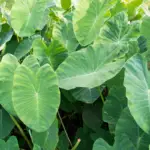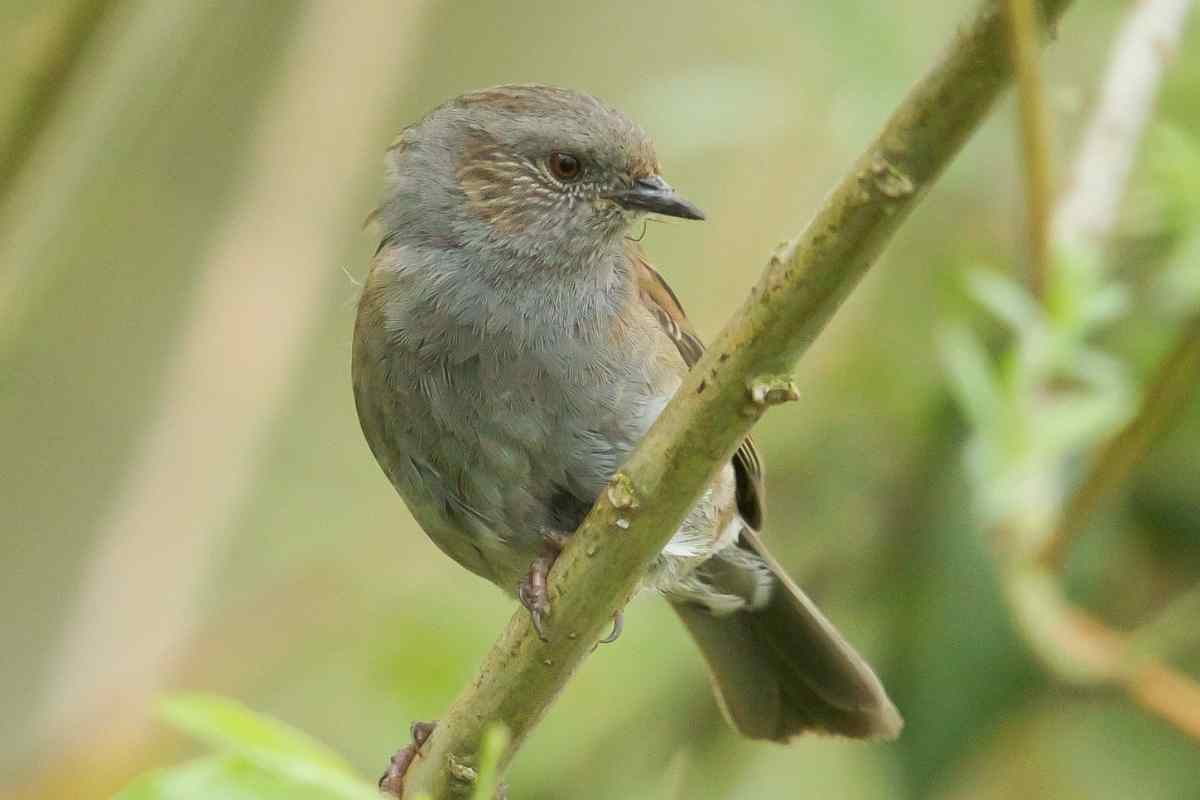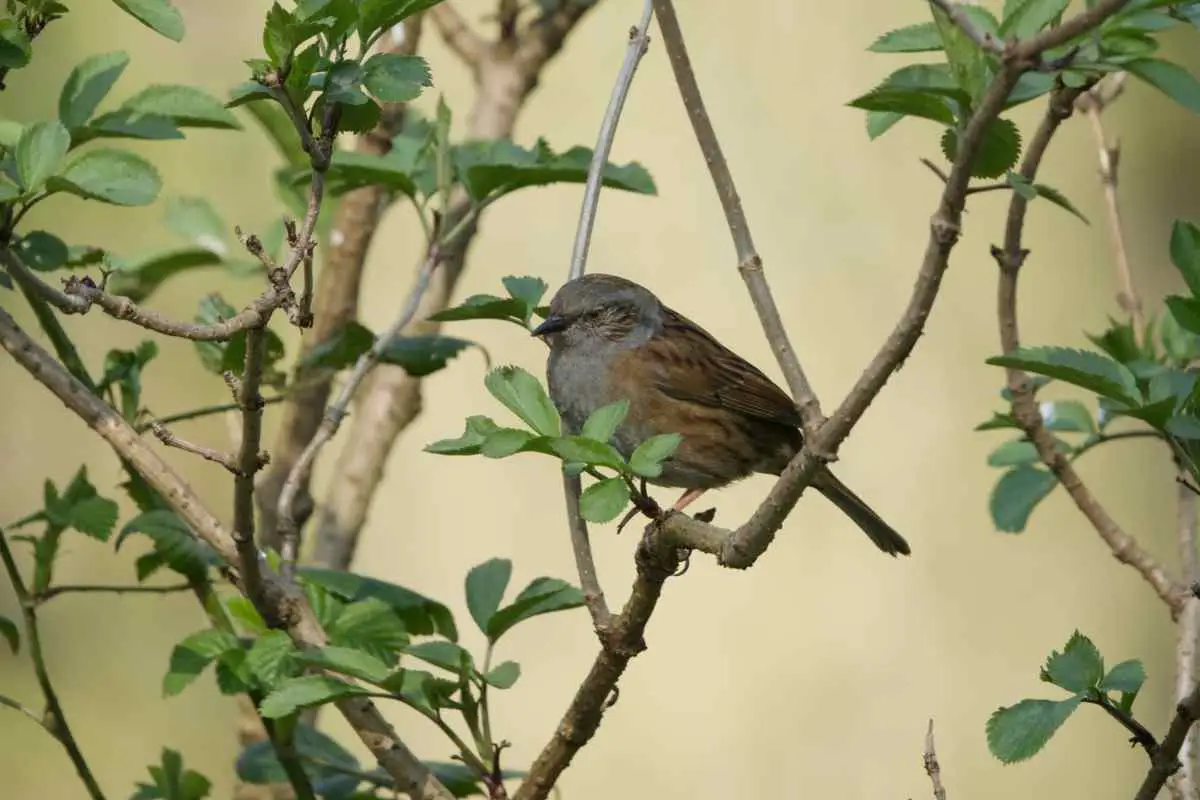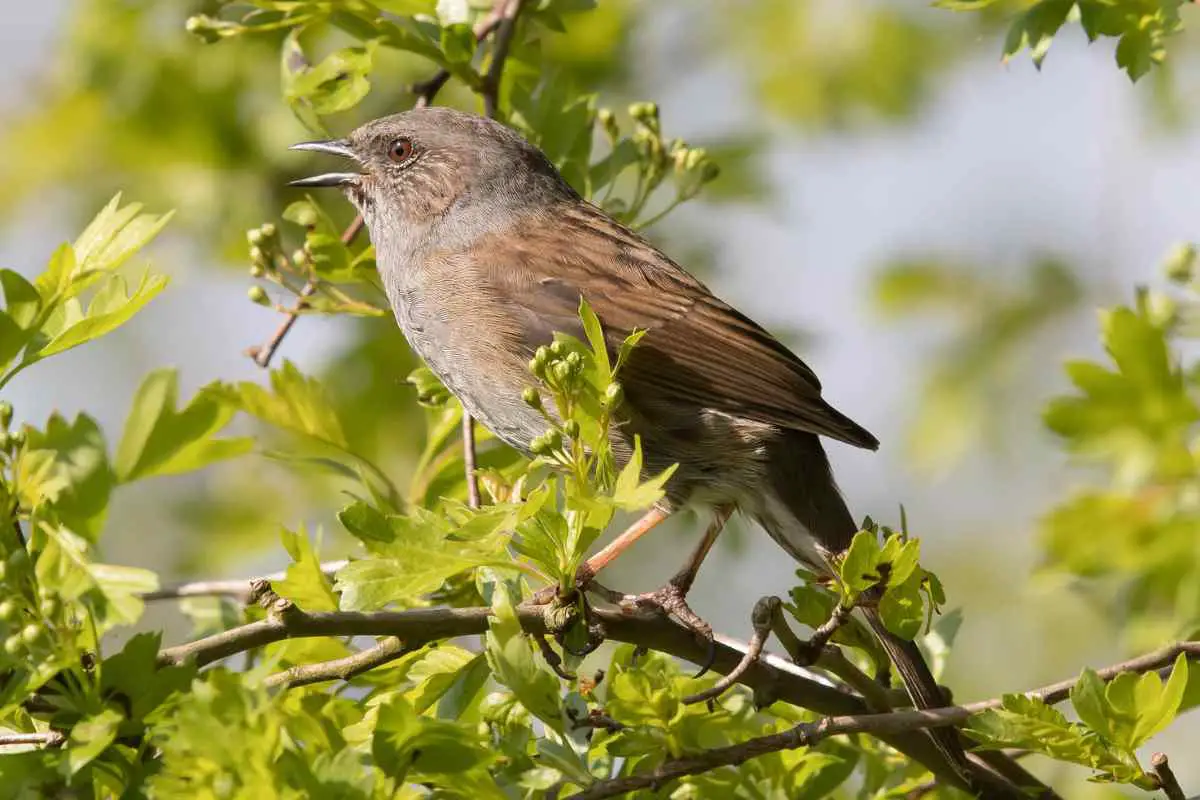White aphids are tiny, soft-bodied insects that feed on the sap of plants, causing damage to leaves, stems, and flowers.
These pests can quickly multiply and infest your garden, making it essential to take action as soon as you spot them.
Fortunately, there are several effective methods for getting rid of white aphids and preventing future infestations.
One of the simplest ways to control white aphids is by using a soapy water garden spray. Mixing one tablespoon of Dawn liquid dish soap or castile soap in a quart of water can create a potent insecticide that can kill aphids on contact.
Once you spot aphids on your plants, use a garden hose with a blast of water to knock them off the plant.
This method is particularly effective for small infestations or as a preventive measure to keep white aphids at bay.
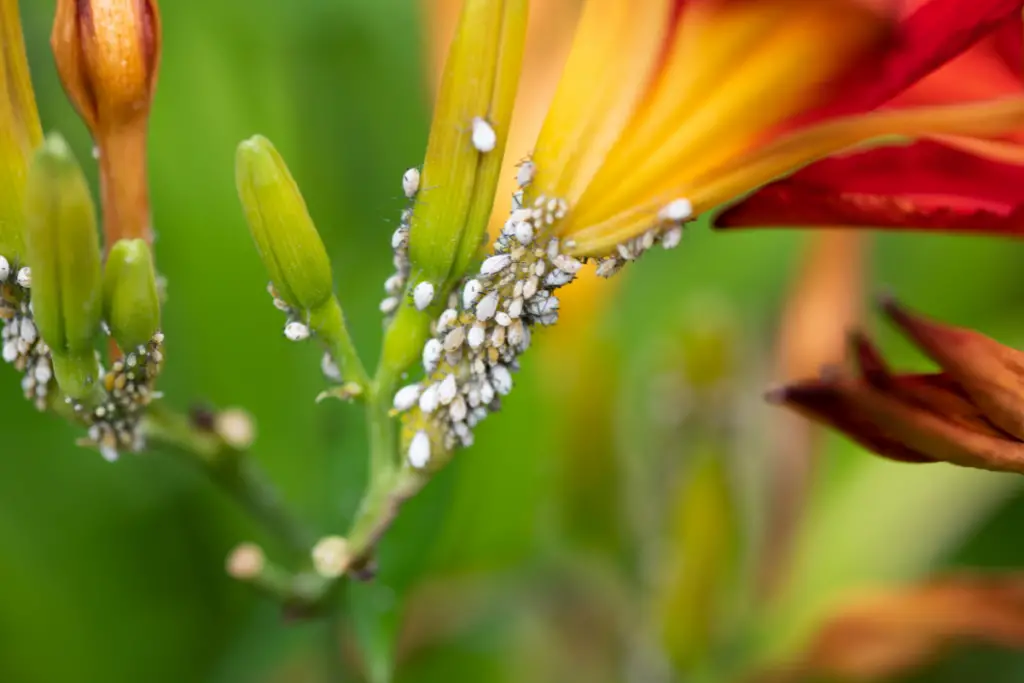
Table of Contents
Understanding White Aphids
White aphids are small, soft-bodied insects that feed on the sap of plants. They are usually found in large groups on the undersides of leaves, stems, and flowers of plants.
These pests can cause significant damage to plants by sucking out their sap, which can lead to stunted growth, yellowing of leaves, and even death of the plant.
White aphids are a type of aphid that are white or light green in color and are commonly found on a variety of plants, such as roses, tomatoes, and peppers.
They are often mistaken for whiteflies due to their similar appearance, but white aphids have longer legs and antennae than whiteflies.
White aphids reproduce quickly, with females giving birth to live young without the need for mating.
This means that a small infestation can quickly become a large one if left untreated. It is important to identify and control white aphids as soon as possible to prevent damage to plants.
There are several methods for controlling white aphids, including using natural predators, such as ladybugs and lacewings, and using insecticidal soaps or oils.
It is important to choose a control method that is appropriate for the plant and the severity of the infestation.
Identifying White Aphids
White aphids are small, soft-bodied insects that feed on plant sap. They are common pests in gardens and can cause significant damage to plants if left untreated.
In this section, we will discuss the physical characteristics and common habitats of white aphids to help you identify them.
Physical Characteristics
White aphids are typically 1-2 millimeters in length and are oval-shaped. They have long, slender legs and antennae and are usually white or pale yellow in color.
Some species of white aphids may have a waxy or woolly coating that gives them a fuzzy appearance.
Common Habitats
White aphids can be found on a wide variety of plants, including vegetables, fruits, flowers, and trees.
They are often found feeding on the undersides of leaves, where they can be difficult to spot.
White aphids prefer warm, humid environments and are most active during the spring and summer months.
Some common habitats of white aphids include:
- Vegetable gardens: White aphids can be found on a variety of vegetables, including cabbage, broccoli, and cauliflower.
- Fruit trees: White aphids can infest fruit trees, including apple, peach, and pear trees.
- Ornamental plants: White aphids can also be found on ornamental plants, such as roses, hibiscus, and petunias.
In conclusion, white aphids are small, soft-bodied insects that can cause significant damage to plants if left untreated.
They are typically white or pale yellow in color and prefer warm, humid environments.
By understanding the physical characteristics and common habitats of white aphids, you can more easily identify and control these pests in your garden.
Why Aphid Control Is Necessary
White aphids are tiny, sap-sucking insects that can wreak havoc on your plants. They reproduce quickly, and a few aphids can quickly turn into a full-blown infestation in no time.
If left unchecked, they can cause significant damage to your plants, stunt their growth, and even kill them.
Aphids feed on the sap of plants, which can lead to yellowing and wilting of leaves, stunted growth, and even death in severe cases.
They also excrete a sticky substance called honeydew, which can attract other pests like ants and encourage the growth of sooty mold, a black fungus that can further damage your plants.
Controlling aphids is essential to maintaining the health and vitality of your plants. Fortunately, there are several effective methods for getting rid of aphids, both natural and chemical.
Some natural remedies include companion planting, using ladybugs and lacewings to eat the aphids, and spraying the plants with a mixture of water and dish soap.
Chemical options include insecticidal soap, neem oil, and pyrethrin-based insecticides.
It’s important to note that while chemical insecticides can be effective, they can also harm beneficial insects like bees and butterflies.
Always read and follow the instructions carefully when using any chemical insecticide, and use them as a last resort.
In summary, aphid control is necessary to protect your plants from damage and ensure their health and vitality.
There are several effective methods for controlling aphids, both natural and chemical, and it’s important to choose the method that works best for your situation while minimizing harm to beneficial insects.
Prevention Measures
Preventing white aphids from infesting plants is the best way to control their population. Here are some measures that can be taken to prevent white aphids from attacking plants.
Regular Plant Inspection
Regularly inspecting plants for signs of white aphids is essential to prevent infestations. Check the underside of leaves, stems, and flowers for clusters of white aphids.
If any are found, remove the affected parts of the plant and dispose of them properly.
Natural Predators
Encouraging natural predators is an effective way to control white aphids. Ladybugs, lacewings, and parasitic wasps are natural predators of white aphids.
Introducing these predators into the garden can help control the population of white aphids.
Additionally, planting flowers that attract natural predators can help keep white aphids under control.
Healthy Soil Maintenance
Maintaining healthy soil is another way to prevent white aphids from attacking plants. White aphids are attracted to weak and stressed plants.
Ensuring that plants are healthy and well-nourished can help prevent white aphids from infesting them.
Using organic fertilizers and compost can help maintain healthy soil and promote plant growth.
In conclusion, preventing white aphids from infesting plants is the best way to control their population.
Regular plant inspection, encouraging natural predators, and maintaining healthy soil are effective prevention measures that can be taken to prevent white aphids from attacking plants.
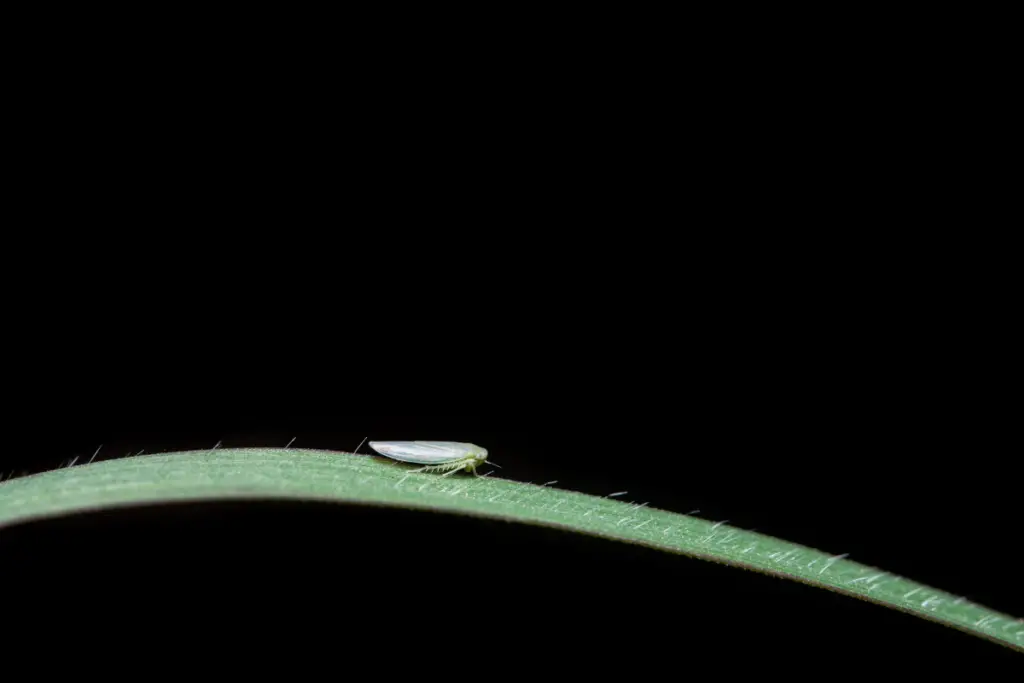
Effective Aphid Control Methods
When it comes to getting rid of white aphids, there are several effective methods available.
In this section, we will discuss some of the most popular ones.
Insecticidal Soap Spray
Insecticidal soap spray is a popular and effective way to control aphids. It is made from natural ingredients and is safe for plants and the environment.
The soap works by breaking down the waxy coating on the aphid’s body, which causes them to dehydrate and die.
To use insecticidal soap spray, mix it with water according to the instructions on the bottle and then spray it on the affected plants.
Be sure to cover all parts of the plant, including the undersides of the leaves.
Neem Oil Usage
Neem oil is another effective way to control aphids. It is made from the seeds of the neem tree and is a natural insecticide.
Neem oil works by disrupting the hormonal systems of insects, which causes them to stop feeding and eventually die. To use neem oil, mix it with water according to the instructions on the bottle and then spray it on the affected plants. Be sure to cover all parts of the plant, including the undersides of the leaves.
Water Jet Technique
The water jet technique is a simple and effective way to control aphids. It involves using a strong jet of water to knock the aphids off the plants.
To use this method, simply take a hose with a high-pressure nozzle and spray the affected plants. Be sure to focus on the undersides of the leaves where the aphids like to hide.
Repeat this process every few days until the aphids are gone.
In conclusion, there are several effective ways to control white aphids. Insecticidal soap spray, neem oil, and the water jet technique are all great options.
It’s important to remember that controlling aphids requires patience and persistence. With the right approach, you can keep your plants healthy and aphid-free.
Post Treatment Care
After successfully getting rid of white aphids, it is important to take care of the plants to prevent future infestations.
Here are some post-treatment care tips:
1. Monitor the Plants
It is important to monitor the plants regularly after treatment to ensure that the aphids do not return.
Check the plants for any signs of infestation, such as sticky residue or black sooty mold. If any aphids are spotted, take action immediately to prevent the infestation from spreading.
2. Water the Plants Properly
Proper watering is essential for the health of the plants and can also help prevent aphids from returning.
Overwatering can lead to root rot, which can weaken the plant and make it more susceptible to pests.
On the other hand, underwatering can stress the plant and make it more attractive to aphids.
Water the plants according to their specific needs and avoid getting the leaves wet, as this can create a humid environment that aphids thrive in.
3. Use Natural Predators
Introducing natural predators, such as ladybugs or lacewings, can help control aphids and prevent future infestations.
These predators feed on aphids and can help keep their populations in check.
However, it is important to ensure that the predators are compatible with the plants and do not harm other beneficial insects.
4. Maintain a Clean Garden
Maintaining a clean garden can help prevent aphids from returning. Remove any dead or diseased plant material, as this can attract pests.
Also, avoid overcrowding plants, as this can create a humid environment that aphids thrive in. Clean garden tools regularly to prevent the spread of pests and diseases.
By following these post-treatment care tips, it is possible to prevent future infestations and keep the plants healthy.
Conclusion
Controlling white aphids can be challenging, but with the right approach, it is possible to get rid of them.
The most effective method for controlling white aphids is to use a combination of physical and chemical control methods.
This includes using insecticidal soap, neem oil, and other natural remedies, as well as pruning and removing heavily infested plants.
It is important to monitor plants regularly for signs of white aphids, as early detection is key to preventing an infestation from getting out of control.
Additionally, keeping plants healthy and well-maintained can help to prevent white aphids from becoming a problem in the first place.
When using chemical control methods, it is important to follow the instructions carefully and use them only as directed.
Overuse of pesticides can harm beneficial insects and can lead to pesticide resistance in white aphids.
In summary, controlling white aphids requires a multi-faceted approach that includes physical and chemical control methods, regular monitoring, and maintaining healthy plants.
By taking a proactive approach to white aphid control, gardeners can effectively manage these pests and keep their plants healthy and thriving.
- How to Dry Basil Leaves: A Professional Guide
- Is an Avocado a Fruit or Vegetable? Simple Answer and Explanation
- Does Pineapple Have Seeds? Exploring the Anatomy of Pineapples
- Blooming Through Winter: Can I Grow Vegetables Indoors in the Winter?
- What Can You Grow in a Greenhouse All Year Round: A Guide to Year-Round Greenhouse Gardening
- Are Blueberries Blue? Debunking the Myth of Their Color













